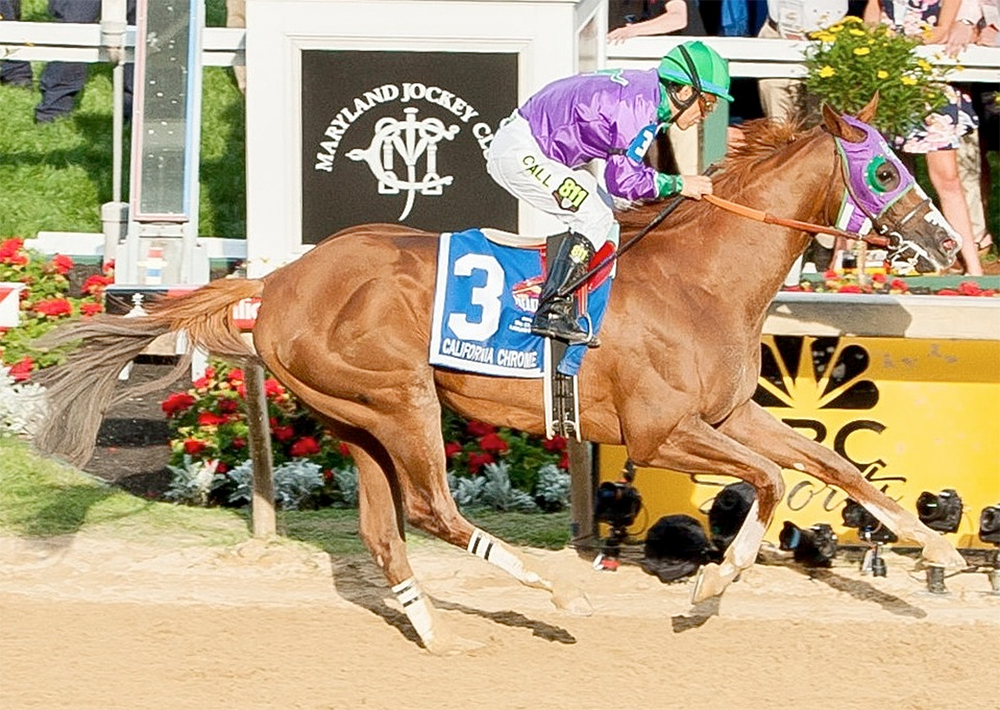California Chrome has raised a lot of attention since his win at the Preakness Stakes in Baltimore, Maryland.
Chrome is the first horse in six years to win the first two of the three races in the Triple Crown series, which gives him the opportunity to be the first horse in 36 years to win all three.
That is, of course, if he can take a final victory at the Belmont Stakes June 7. The last Triple Crown winner, Affirmed, ran in 1978, and since then only 10 horses have even been close to breaking the streak.
However, this drought doesn’t seem to be entirely bad luck. The Triple Crown is harder than ever to win. When Affirmed was racing back in 1978, a total of 23 horses were racing—while this year, a total of 32 horses were in the field. This inundation of new racers makes winning all three events seem like a near impossibility.
While California Chrome is a fan favorite and has significant support from the horse racing community, the horse and his team have stirred up quite the controversy. Between the Kentucky Derby and the Preakness Stakes, it was brought to the attention of the Triple Crown committee that he had been wearing a form of nasal strips during his races.
While there’s no exact rule prohibiting this while racing, the committee does not allow the use of any modifications that may enhance the horse’s ability while racing (other than the sanctioned items such as blinders, horse shoes, etc).
While there is research that indicates nasal strips decrease airway resistance in horses and may decrease the amount of bleeding associated with exercise-induced pulmonary hemorrhage, there’s no evidence that the strips enable a horse to run faster. Because of this, the committee has officially added nasal strips to the list of acceptable items allowed during a race. Thank goodness.
A lot of people are unhappy with this ruling and believe that it has indeed enhanced his racing performance. Chrome had only won a few races early on in the season; since he began wearing the strips, he’s won his last six races.
However, there was something else that changed as well. Chrome switched riders from Alberto Delgado to Victor Espinoza.
In Chrome’s first few races, Delgado repeatedly got him in trouble and prevented him from winning. Espinoza, above all, has used Chrome’s athletic ability (a quick, nimble acceleration and a willingness to use it multiple times in the same race) to stay in the clear and let Chrome run the way that he was bred to.
Even though Chrome has experienced some bad press, it has by no means damaged his overall value as a horse. Chrome was bred for the cost of $10,000. After winning the Kentucky Derby, Chrome’s team was offered $6 million to sell the horse. Declining the offer, his team believes that he is worth much more than that, especially after winning his second race.
“If you could ever win these big races, for a stallion prospect, you know he could be worth $30 million,” Chrome’s team told The New York Times. “When you really think about it, what they get in stud fees, and have a full [breeding] book for the next 10–15 years.”
Even if Chrome does take the Triple Crown prize, the winner only receives a relatively meager $1.4 million. However, if Chrome does complete the sweep, that expected $30 million may increase even further.
Watch Chrome at the Belmont stakes on June 7 to see if he can do what no other horse has been able to do in the last 36 years.






